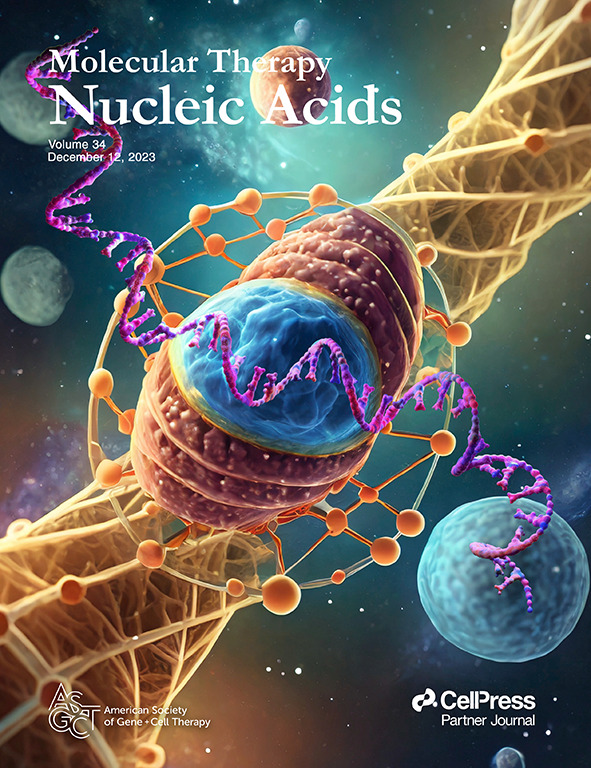Functional benefit of CRISPR-Cas9-induced allele deletion for RYR1 dominant mutation
IF 6.5
2区 医学
Q1 MEDICINE, RESEARCH & EXPERIMENTAL
引用次数: 0
Abstract
More than 700 pathogenic or probably pathogenic variations have been identified in the gene causing various myopathies collectively known as “-related myopathies.” There is no treatment for these myopathies, and gene therapy stands out as one of the most promising approaches. In the context of a dominant form of central core disease due to a mutation, we aimed at showing the functional benefit of inactivating specifically the mutated allele by guiding CRISPR-Cas9 cleavages onto frequent single-nucleotide polymorphisms (SNPs) segregating on the same chromosome. Whole-genome sequencing was used to pinpoint SNPs localized on the mutant allele and identified specific CRISPR-Cas9 guide RNAs. Lentiviruses encoding these guide RNAs and the nuclease were used to transduce immortalized patient myoblasts, inducing the specific deletion of the mutant allele. The efficiency of the deletion was assessed at DNA and RNA levels, and at the functional level after monitoring calcium release induced by the stimulation of the RyR1-channel. This study provides proof of concept regarding the benefits of mutant allele deletion, in the case of a dominant mutation, from both a molecular and functional perspective, and could apply potentially to 20% of all patients with a mutation.CRISPR-Cas9诱导等位基因缺失对RYR1显性突变的功能益处
目前已发现 700 多种致病或可能致病的基因变异,这些基因变异导致的各种肌病统称为 "相关肌病"。目前还没有治疗这些肌病的方法,而基因疗法是最有前途的方法之一。对于因基因突变而导致的显性中枢核心疾病,我们的目标是通过引导 CRISPR-Cas9 分裂同一染色体上频繁出现的单核苷酸多态性(SNPs),显示特异性灭活突变等位基因的功能益处。全基因组测序被用来精确定位突变等位基因上的 SNPs,并确定特定的 CRISPR-Cas9 引导 RNA。利用编码这些引导 RNA 和核酸酶的慢病毒转导永生化的患者肌母细胞,诱导突变等位基因的特异性缺失。在 DNA 和 RNA 水平上评估了基因缺失的效率,并在功能水平上监测了刺激 RyR1 通道诱导的钙释放。这项研究从分子和功能角度证明了在显性突变情况下删除突变等位基因的益处,可能适用于所有突变患者中的 20%。
本文章由计算机程序翻译,如有差异,请以英文原文为准。
求助全文
约1分钟内获得全文
求助全文
来源期刊

Molecular Therapy. Nucleic Acids
MEDICINE, RESEARCH & EXPERIMENTAL-
CiteScore
15.40
自引率
1.10%
发文量
336
审稿时长
20 weeks
期刊介绍:
Molecular Therapy Nucleic Acids is an international, open-access journal that publishes high-quality research in nucleic-acid-based therapeutics to treat and correct genetic and acquired diseases. It is the official journal of the American Society of Gene & Cell Therapy and is built upon the success of Molecular Therapy. The journal focuses on gene- and oligonucleotide-based therapies and publishes peer-reviewed research, reviews, and commentaries. Its impact factor for 2022 is 8.8. The subject areas covered include the development of therapeutics based on nucleic acids and their derivatives, vector development for RNA-based therapeutics delivery, utilization of gene-modifying agents like Zn finger nucleases and triplex-forming oligonucleotides, pre-clinical target validation, safety and efficacy studies, and clinical trials.
 求助内容:
求助内容: 应助结果提醒方式:
应助结果提醒方式:


